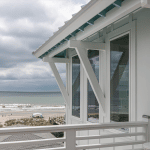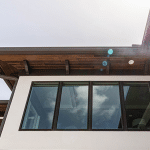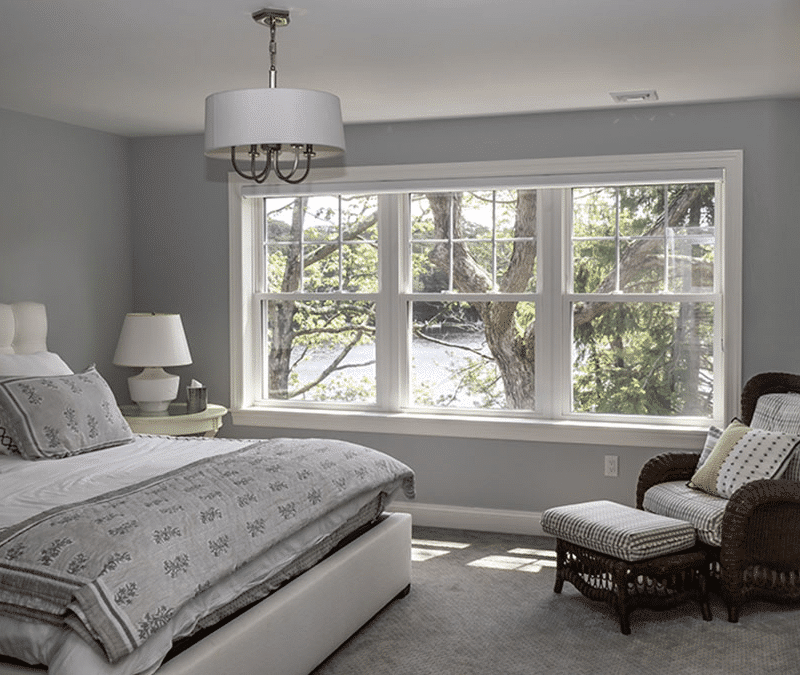
Low-E Glass: What is it and Why Your Windows Need it
What is Low-E?
A low emissivity (Low-E) coating is a microscopically thin metallic layer. When applied to a glass lite, it can enhance the window’s thermal performance through filtering different solar energies on the solar energy spectrum.
Solar Energy Spectrum
The sun emits a variety of electromagnetic waves of energy which makes up the solar energy spectrum. The solar energy spectrum is mainly comprised of three forms of electromagnetic energy: ultraviolet, visible and infrared.
Ultraviolet Energy
UV energy is one of the most dangerous forms of energy present in the solar energy spectrum and is invisible to the human eye. It is responsible for causing sunburn and the fading of interior fabrics such as furniture and carpets. Fortunately, a majority of the most harmful forms of UV energy are absorbed by the ozone layer in the earth’s atmosphere.
Visible Light
Visible light lies in the middle of the solar energy spectrum and as the name suggests, is visible to the human eye in the form of colors.
Infrared Energy
Infrared energy occurs at the opposite end of the solar energy spectrum as ultraviolet energy. It is invisible to the human eye and is perceived as heat.
How is Low-E Glass Created?
During the 1970s, the pyrolytic (hard coat) Low-E application process became popular. In the pyrolytic process, the coating is applied directly to the hot glass ribbon as it is produced on the float line. As the glass cools, it becomes fused with the Low-E coating. Next, the glass is cut to stock sheet sizes for shipment. Low-E glass created in the pyrolytic process is commonly called “hard coat” Low-E due to the coating’s durability.

A process known as Magnetron Sputter Vacuum Deposition (MSVD) or “soft coat,” emerged in the 1980s and has been continually refined. In MSVD, pre-cut glass sheets are loaded onto a conveyor where they are washed and passed through a series of vacuum chambers at room temperature. The vacuum chambers deposit microscopically thin layers of metal oxides onto the glass and are fused to the glass with an electric charge. The resulting Low-E coat boasts impressive thermal performance but is referred to as a “soft coat” due to its fragility.
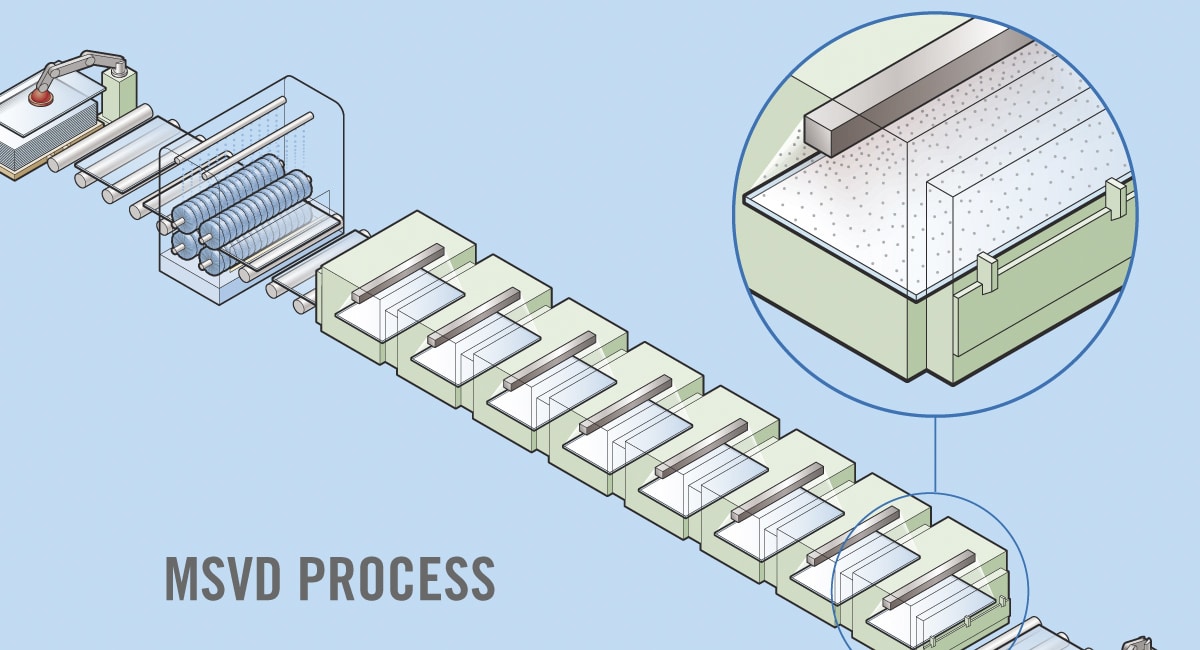
How Do Low-E Glass Coatings Work?
When discussing the functionality of Low-E coatings, it is important to differentiate the two different kinds of Low-E glass: passive Low-E and solar control Low-E.
Passive Low-E
Passive Low-E coatings are designed to maximize solar heat (infrared energy) and visible light into the home while limiting ultraviolet energy. It is used in glass packages designed for northern climates as it reduces the homeowner’s reliance on internal heating to warm the home. Passive Low-E coatings function best when applied to the glass lite furthest from the sun. In a double glazed insulated glass unit (IGU) the Low-E is typically on the 3rd or 4th surface.
Solar Control Low-E
Solar Control Low-E coatings are designed to limit both solar heat (infrared energy) and ultraviolet energy while maximizing visible light. It is commonly used in southern climates as it helps keep the home cool, reducing energy consumption related to air conditioning. Solar control Low-E coatings function best when applied to the glass lite closest to the sun. In a double glazed IGU, the Low-E is typically on the second surface — facing the air space in between the glass lites.
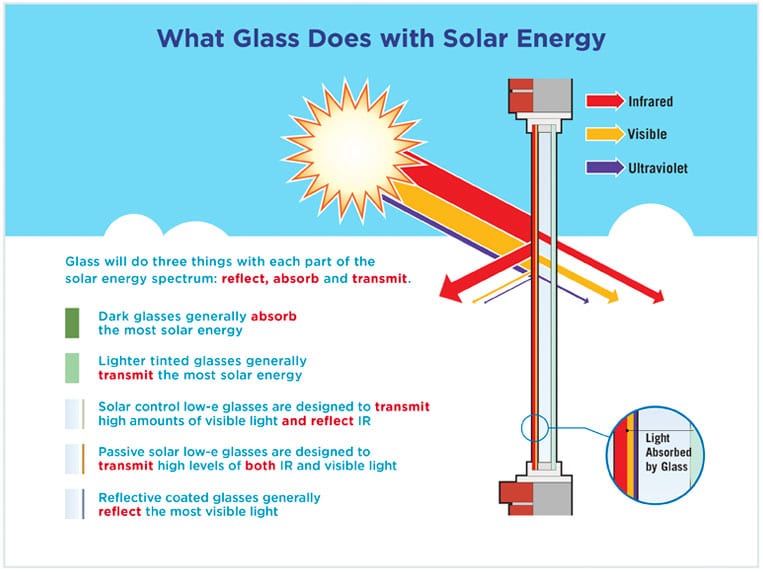
Measuring Low-E Glass Performance
When determining the Low-E glass thermal performance, a couple of metrics are measured.
U-Value and R-Value
The U-Value measures the rate of heat transfer and indicates how well the window insulates. The numbers range from 0.25 – 1.25, and the lower the number, the better it performs at keeping heat inside. In relation to the U-value, the R-value is used to measure the product’s resistance to heat transfer. The R-value is calculated by finding the reciprocal of the U-value (R-value = 1/U). Lower U-Values will always correspond with higher R-Values and vice versa.
Solar Heat Gain Coefficient
The solar heat gain coefficient measures how well a product resists solar heat gain. This number ranges from a scale of 0-1 and the lower the number, the better a product is at resisting solar heat. Lower numbers also generally correlate with lower costs when cooling your home.
Visible Light Transmittance
Visible light transmittance measures how much visible light your product allows into the home. This number ranges from 0-1 and the higher the number, the more visible light is transmitted. High visible light transmittance can reduce the need for artificial lighting.
How Does Low-E Glass Benefit Homeowners?
There are several ways that a homeowner can benefit from a Low-E glass package, but the most prominent being energy efficiency and the cost savings associated with it. Low-E glass packages for northern climates are designed to allow thermal energy into the home, correlating with lower heating bills. Low-E glass packages in southern climates are designed to do the opposite, reflecting thermal energy away from the home, resulting in reduced air conditioning costs. The effects of the two different glass packages can be seen in Vitro’s “How does Low-E Glass Work?” video using the Crookes Radiometer experiment.
In addition to the energy efficiency benefits, Low-E glass also prevents discoloration of fabrics and furniture by blocking ultraviolet energy from entering the home.
In Conclusion
Advancements in the fenestration industry have reshaped the way we think of windows and doors. Not only are they a means to view the inside and outside of the home, but they are also a crucial component when considering the overall energy efficiency of your home. When deciding on windows for your next build or remodel, be sure to discuss which Low-E glass package will work best for you.
Additional Resources
The Electromagnetic spectrum:
Low-E Glass:
Viwinco Thermal Performance Data:
- Replacement Cambridge Line
- Replacement Edgemont Line
- New Construction S-Series Line
- OceanView Impact-Resistant Line

